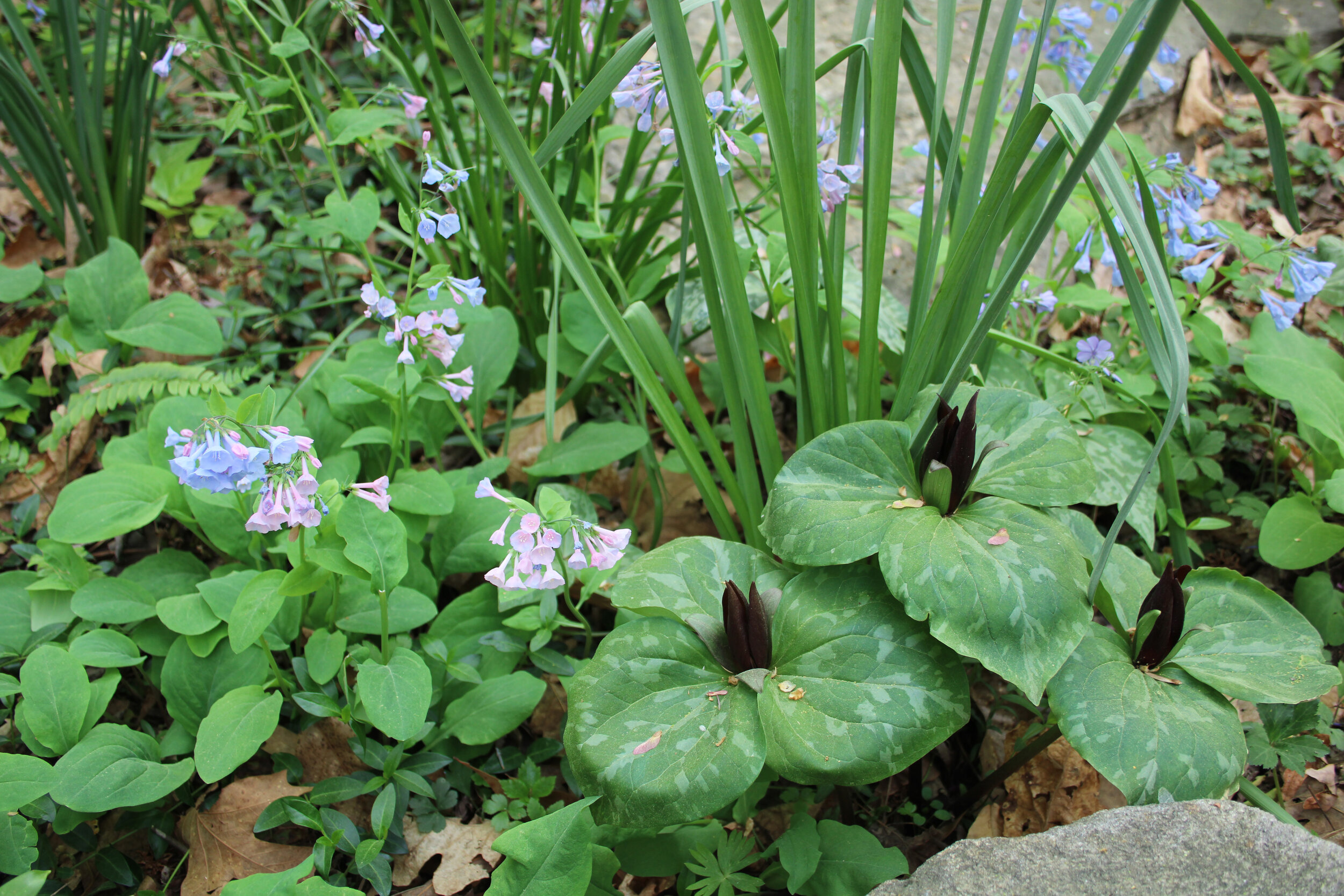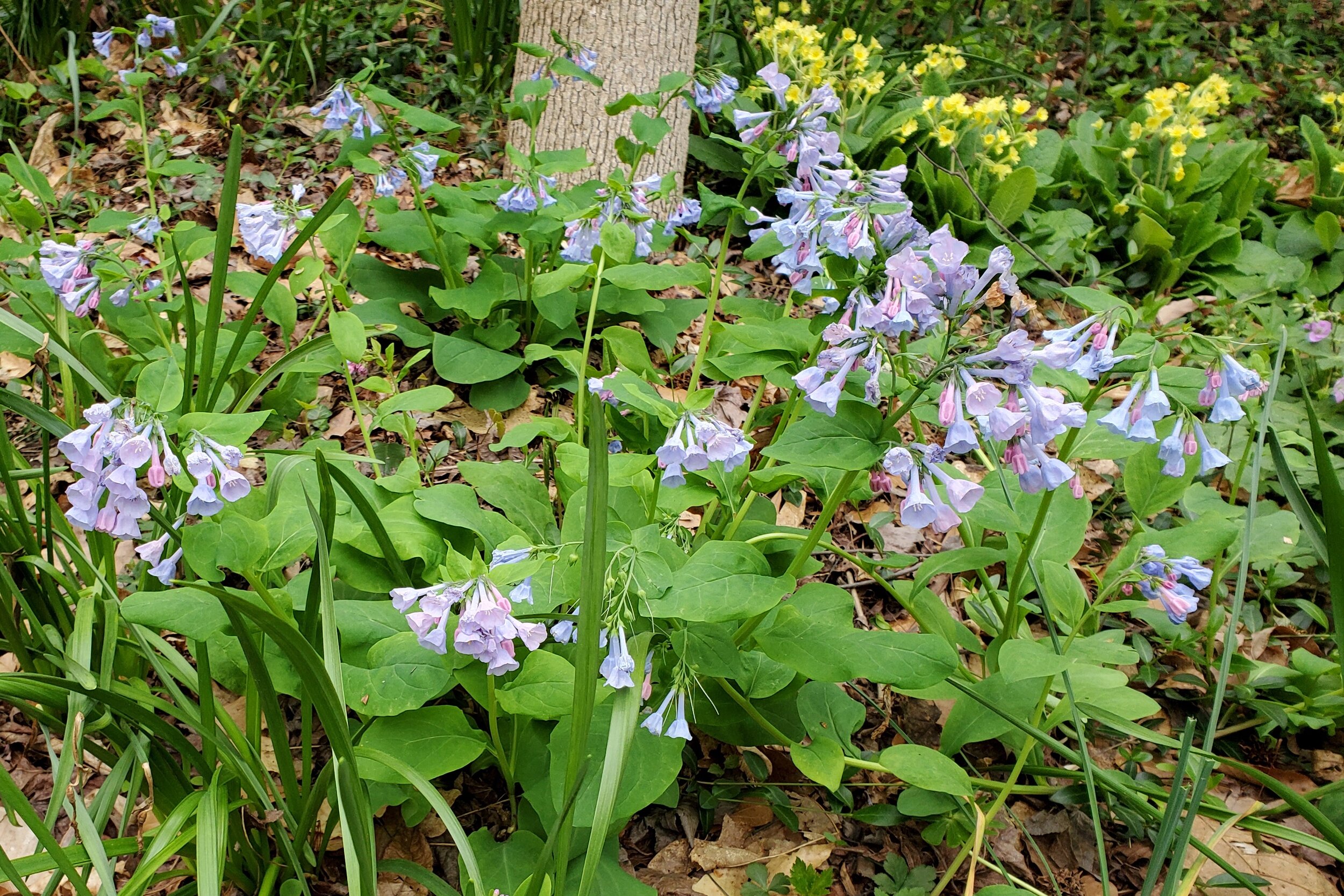Mertensia virginica (pronounced mer-TEN-see-ah ver-JIN-ih-kah ) is an unwieldy name for a beautiful spring wildflower. Better known as Virginia Bluebells or Virginia Cowslips, this southeastern native thrives in upstate South Carolina, where I live. If you think the Latin name belies the plant’s beauty, consider some of the other common names: Lungwort, Oysterleaf or Roanoke Bells.
Thin stems with rounded grayish-green leaves are topped by clusters of pink buds that open to sky blue, trumpet-shaped flowers. The blooms have five stamens spaced so far away from the pistil that individual flowers are unable to self-pollinate. Instead, butterflies play matchmaker, aided by an occasional bumblebee. The fertilized bloom produces four seeds. If left undisturbed, the seeds give rise to spreading colonies but are not considered invasive. They can also be propagated by division. The arching stems may reach up to 24 inches. They are hardy in growth zones 4 to 9.
Virginia Bluebells thrive in shade and moist soil that is high in organic matter. Pair them with Primroses or Trillium for a gorgeous spring display. They are classified as “ephemeral” which means “fleeting.” Plants appear, bloom, and then disappear as they go dormant until the following spring. This makes them an ideal pairing with hosta, since they will go dormant just as the hosta starts to gain size.



